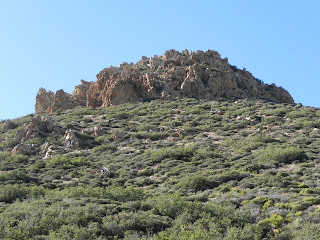I would like to welcome you to my blog on Cold Creek, Nv. I will share some history, which you can find on Nevada Magazine,
http://www.nevadamagazine.com/issues/read/a_glint_in_the_desert/
Cold Creek is a jewel in the desert that most visitors to Las Vegas have no idea about. It sits nestled in the Spring Mountains of Nevada, with a population of near 250.
Cold Creek is named for the little creek that runs through it and feeds three small ponds. The source of its cool, clear water is a mountain spring, and the creek and ponds provide recreational opportunities of all types. Located at 6,500 feet, Cold Creek is much cooler than Las Vegas. It’s possible to see patches of snow even into early summer.
The first thing you will notice about the community is that it is quite hidden. Most of the town can’t even be seen from the road. Yet the entire Sheep Range can be seen from this location. Just up the road are the ruins of an old ranch house, and the history of this place takes visitors back to the days of the wide-open west.
In the 1930s, the place served as a dude ranch, but different from the dude ranches of today. Stacy Irvin, curator of education at the Nevada State Museum in Las Vegas says, “Dude ranches were popular after the law for quickie divorces was passed in Nevada. Women would stay there for six weeks in order to get Nevada residency and be eligible for a divorce.”
According to Kelly Turner, archaeologist for the U.S. Forest Service, there was a working horse ranch near the creek in the 1940s. Cowboys rounded up feral horses that frequented the area and branded and sold them. Springs dotted the landscape, watered the horses, and provided water for alfalfa fields and gardens. A few prospectors and trappers could also be found in the area at the time. The remnants of an 1800s saw mill from the 1800s stood on the mountain, just above the ranch site.

Later in the 1940s, a U.S. Fish and Wildlife Service biologist stayed at the ranch house while he worked out of the Desert Game Refuge headquarters at Corn Creek. The ranch soon passed into federal hands, with the Bureau of Land Management taking over and installing rangers at the ranch house. Articles in the Las Vegas Review Journal reference the BLM as managers of the area in the 1970s, when the site of the ranch house, since removed, was designated as a group picnic area. Eventually it was transferred to the Forest Service, which currently manages it.
Today, a few hundred people live in the town. These are folks who want to live away from it all. There is no power, so homeowners use generators and solar power. There is also no phone service except for cellular.
But Cold Creek residents know it’s worth the inconveniences to live amidst such natural beauty. Cold Creek is located at a confluence of ecozones. The most unique feature is the water, seemingly out of place in the middle of the desert. This water draws many plant and animal species, some found nowhere else.
Vegetation is varied around Cold Creek, and you will find cottonwood and willow trees, as well as pinion pine and juniper. Shrubs include scrub oak, mountain mahogany, and wild roses, and myriad wildflowers such as penstemon and columbine grace the spring.
Higher above town, the vegetation changes to ponderosa pine and white fir. But perhaps the biggest secret is that Cold Creek is one of the few places to view elk near Las Vegas. The grown-over McFarlane burn area east of Cold Creek is a prime viewing area for the animals. Both elk and feral horses are commonly sighted as they graze and drink their fill of the cool, fresh water.





























